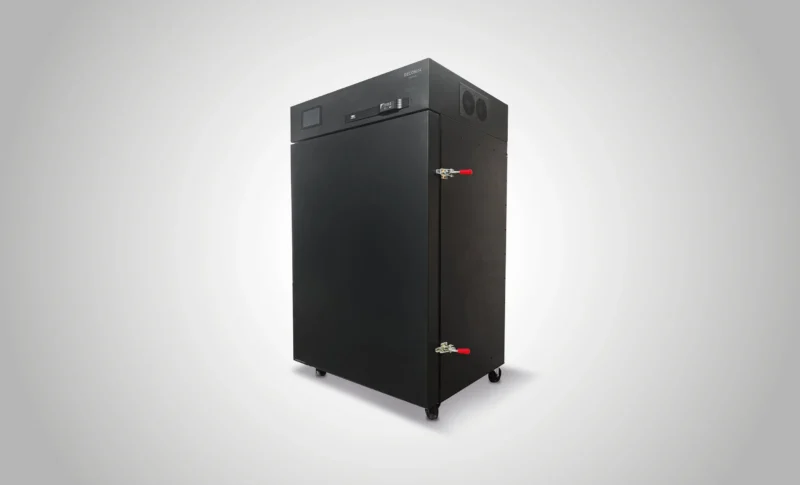Just as the cannabis industry has grown at a rapid rate over the past five years, the actual grow room environment has also experienced significant evolution.
Growing at-scale is a new frontier for many and a new field that requires different ways of thinking — novel solutions, many of which are unfamiliar to both long-time growers and the new entrants into the industry like engineers and equipment vendors.
There are four main challenges that have combined to put tremendous strain on the new, modern-day cannabis companies. Before we can hope to solve these problems, we need to first understand what the problems and challenges are and how they came to be.
Lack of Experience Across Multiple Domains
There are severe knowledge gaps in this industry that need to be closed before it can truly progress and mature.
The issue is not necessarily knowledge related to cultivation. Master growers are experts when it comes to growing cannabis. Some of them were once pioneer growers operating out of their basement or small-footprint operations, others have PhDs in related fields — now they’re bringing their world-class knowledge to a newly legitimized market as employees, shareholders, executives or even founders, of new cannabis companies. Naturally, any industry that started in a basement is bound to experience some growing pains.
But the ideas that applied well to basement grow-ops are not applying well to commercial indoor grow facilities — something the industry is discovering through great pain and expense.
Lack of understanding also persists among those who are ancillary to the industry, such as third-party equipment suppliers. They don’t all necessarily understand the growing environment.
On top of that, growers — who do understand — are now dealing with products and services they never had to before, or at a scale they never dealt with before. The result is confusion, poor communication and poor implementation of proposed solutions, which often don’t hit the mark.
Facilities of a million or more square feet are under construction and huge amounts of money are being poured into these developments.
With technology and knowledge in its infancy, it’s an open question whether those dollars are being invested intelligently and put towards a facility that will work and deliver value.
Market and Regulatory Pressures
The legal market has brought about a new landscape that changes that game dramatically.
Cannabis markets are unpredictable and rapidly evolving. Any new markets under development — in other words, most of them — are experiencing major supply shortages as few were prepared to meet the tremendous demand among people in areas where cannabis has become legal for adult and medical use.
It drives the pace of facility development to dizzying levels as growers, seeing an opportunity to grab market share early on, scale up to fill the demand. But it is critical that growers scale up the right way.
This is no area for a “rush job.” The idiom “buy once, cry once” applies really well here — while it is slower and more expensive at first to take time to do things right, you’ll save more in the long run by way of avoiding headaches and unnecessary ownership costs.
Adding to this pressure, the varying regulatory environments also challenge growers a lot.
Some regulatory set-ups may make business less flexible and require different approaches. For example, some may require a full grow to be evaluated before the producer can receive a production permit.
To minimize their capital exposure early on, this may motivate the grower to build a small first stage of their facility simply to satisfy this licensing requirement. After they go through the required harvests and receive the permit, the facility can be expanded to accommodate full production.
This is a good example of how local regulations can have an impact on all aspects of growing, because it impacts the HVAC system type and design. Some types of HVAC systems are not conducive to incremental expansion. The ideal HVAC solution is one that can cost-effectively scale with additional rooms or square footage.
Another example of regulatory pressures relates to the economics of growing in a given market. Some markets that have low barrier of entry for growers and don’t limit the number of licenses are having the opposite of a supply shortage – they have an enormous glut.
These markets are at or near saturation, causing the market price per gram to drop. This results in even more pressure for growers to cut costs so they can offer cheaper products. In a saturated market, one of the drivers of success for a producer is lower cost.
Lack of Standards
One of the main reasons there is lack of consistent knowledge in the grow industry is because there are no standards in place regarding buildings and their systems. It’s seriously hurting the industry right now by contributing to the information vacuum.
In the mainstream, engineers rely on proven and documented standards in order to properly handle buildings they are not familiar with. An example are codes published by the American Society of Heating, Refrigeration and Air Conditioning Engineers — or ASHRAE.
However, ASHRAE’s codes are geared towards residential and commercial buildings that are primarily designed for humans. There currently are no ASHRAE standards that relate directly to indoor plant environments and few of their standards are sufficient to address the unique needs of these spaces.
Even the folks who think they have found the answers to these challenges are not inclined to share information or insights. This “secret sauce” mentality has exacerbated the challenges by ensuring no research or data-sharing occurs in the industry. If this secrecy continues, there can be no hope for developing industry standards and best practices.
As a result, engineers are without guidance as they get involved in the design and construction of modern grow rooms. They wind up inventing solutions based largely on guesswork and the application of best practices from other environments or industries.
Standards in any industry are critical. They are a set of principles that everyone has agreed on and can be followed uniformly to ensure ideal outcomes. As the International Standards Organization says, standards answer the important question: “What is the best way of doing this?”
You may think some standards would have been created in the 25 years of medical cannabis. While it’s certainly true that some things have changed since that industry got started, it isn’t necessarily true that the experience of the industry has translated into formalized guidelines.
Nor would those standards reflect the extraordinary advancements made in industry technologies just in the past couple of years. The main standards borne out of medical grows are governmental regulations relating to quality of crop and specific chemical contents, such as level of CBD vs. THC, for example.
But these are of little help to someone building a new operation today with questions relating to facility design and operation. The medical grows of before are not necessarily similar to what is being built today, especially for adult use grows — which, as a reminder, are expected to be the fastest-growing market segment in cannabis for the next few years. The game is different now.
The American Society of Agricultural and Biological Engineers (ASABE) has taken notice of the vacuum that exists today and has partnered with ASHRAE to create a new guideline for indoor growing environments: ASABE X653 guideline “Heating, Ventilating, and Air Conditioning (HVAC) for Indoor Plant Environments without Sunlight.” The author is a contributing member on the developing committee.
This guideline is intended to provide clarity for engineers regarding the design and operation of isolated indoor plant environments — in other words, warehouses that do not have windows and totally rely on high-performance HVAC systems to control the environment.
Misapplication of Traditional Equipment
In many cases with new grow rooms, certain solutions have been used simply because they’ve worked before in other applications. As noted, the unique nature of the cannabis growing environment means different approaches need to be taken.
Many of the solutions proposed in the recent past for grow rooms are simply not sufficient and deliver poor value for growers.
There are potentially many approaches to HVAC that could be applied to this space. But, some of them would be a misapplication of technology. One example is standard commercial air conditioners. These types of air conditioners been a typical choice because they’re cheap and are often used in similar large facilities.
The setup is quite simple, and many engineers are familiar with how they work, so they feel comfortable applying them here, though they are not necessarily well-suited to the grow space. This is because they have some technical limitations that may cause them to be poor performers on the metrics that growers care about, like control of humidity and ability to cool the indoor space when it’s cold outside, not to mention energy efficiency and optimal room control.
Fundamentally, the misapplication of technology is largely due to lack of knowledge and understanding of the products available on the part of many different stakeholders in the industry. This goes back to engineers, but also contributing to this information vacuum are traditional HVAC suppliers and contractors.
On the side of manufacturers, one issue has been the lack of purpose-built HVAC equipment for grow rooms. Traditional large-scale manufacturers have been reluctant to invest R&D capital into producing a dedicated product for this marketplace for potentially many reasons: Indecision over how to approach the design, questions about liability due to legal uncertainties and uncertainty over whether the market opportunity was worth the required investment to make a new type of product.
The cannabis market has had an arguably questionable trajectory until late 2018, with legalization in Canada, so the potential market size for HVAC manufacturers up until that point had been unclear.
For those who have entered the market, most are repurposing existing products designed for a different application. It’s not necessarily that the solution has to be designed from scratch — there are some applications that bear similarity to grow rooms that can provide a starting point.
For example, indoor swimming pools have similar latent loads and operating conditions in terms of temperature and relative humidity levels. This has meant manufacturers of indoor pool dehumidifiers have been well-positioned to provide for the cannabis market — but only to a certain degree.
There is still a requirement to further develop their product line specifically for grow rooms and not all have been willing to invest significantly in doing this.
Then there are applications that are not as compatible with grow rooms. One example is data center air conditioning. At face value, it would appear data centers are quite like grow rooms — they’re both isolated indoor spaces with significant heat loads that originate from equipment that require active air conditioning year-round.
For data centers, the heat comes from servers while, for grow rooms, it comes from lamps. But data centers have no need to dehumidify the air — in fact, most add humidity to help reduce static electricity. Meanwhile, grow rooms have a large humidity load due to plant transpiration and evaporation from the watering system.
That makes a huge difference from a science and technology application perspective. Therefore, the air conditioning equipment that works well in data centers does not usually apply well to grow rooms.
Some growers are still sorting out their approach to building and equipment controls and not everybody understands how to properly implement them.
This requires more involvement from equipment manufacturers and start-up contractors to solve. Building control systems, or specific equipment controls, may require software engineering to tailor their logic to the grower’s needs.
The grower needs to take the lead in this situation because they are best-suited to know exactly what is needed here.
This was a condensed chapter excerpt from the forthcoming book, Getting Grow Rooms Right, on grow room HVAC design, specification, selection, installation and operation. Order your copy at AgronomicIQ.com/book.
Author
-
Geoff Brown, Director of the Agronomic IQ, is a keynote speaker across North America on the issues of HVAC for grow rooms and is a contributing member to the American Society of Agricultural and Biological Engineers (ASABE) X653 guideline. To learn more, check out AgronomicIQ.com.






